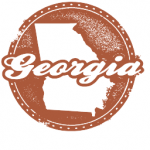What can healthcare professionals who study human diseases and their impact on physiological structures and movement learn from the biological structure of animals, such as ants, frogs, mosquitoes, snakes—even the force of elephant pee?
During the 2019 ACR/ARP Annual Meeting Opening Lecture, Saturday, Nov. 9, David Hu, PhD, will unlock the mysteries of nature in motion, discussing the blend of engineering and biology through his quirky, illuminating research on locomotion. An engaging, energetic speaker, he will share what he calls his “journey with wacky science,” blending humor and cutting-edge discoveries on the dynamics of interfaces—fluid to fluid, solid to fluid, solid to solid. He will share stories about his laboratory’s work in biomimetic technologies based on nature’s innate designs.
The Speaker
Dr. Hu was a nerdy kid from the suburbs who spent too much time in front of his computer. His science teachers inspired him to get outdoors, study nature and join the cross-country running team—all enabling him to explore the world up close. During one marine biology field trip to a nearby island, Dr. Hu and his classmates studied and imitated turtles in their natural habitat, literally learning how the animals moved by crawling through the mud.
Quirky experiences like these lit a fire in Dr. Hu, who is now an associate professor of fluid mechanics in the George W. Woodruff School of Mechanical Engineering and has a joint appointment in the Department of Biology at the Georgia Institute of Technology. He studied mechanical engineering and mathematics at the Massachusetts Institute of Technology, then launched a research career on the biomechanics of animal locomotion.
Today, at the Hu Lab at Georgia Tech, Atlanta, the researchers study how and why fire ants build bivouac towers, why frogs’ tongues are so sticky and how snakes slither. In one landmark study, Dr. Hu established that elephants and cats—despite the fact that an elephant’s bladder is 3,600 times larger than a feline’s—both take the same amount of time to pee (20 seconds). Also, elephants urinate at four meters per second, about the same volume of liquid force as five showerheads.
Among his many honors both prestigious and goofy, Dr. Hu won the Ig Nobel Prize for Improbable Research in 2015 for his research on the hydrodynamics of mammal urination, including the duration of the urine streams of a menagerie of different animals. He and Patricia Yang, a graduate student in mechanical engineering, and two undergraduate assistants spent time at Zoo Atlanta filming 32 different mammals as they emptied their bladders. Their goal was to unlock more efficient methods for designing fluid-producing equipment, such as water hoses and tanks. Dr. Hu’s study on mammal urination was published in 2014 in the Proceedings of the National Academy of Sciences.

